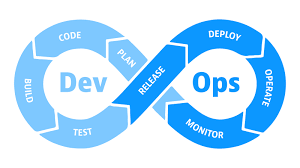Intro:
In the ever-evolving landscape of software development, ensuring the integrity and security of build artifacts is paramount. As CI/CD pipelines become more sophisticated, integrating cryptocurrency technologies can provide a robust solution for managing and securing build artifacts. This blog post delves into the concept of immutable build artifacts and how crypto technologies can enhance CI/CD pipelines.
Understanding CI/CD Pipelines
CI/CD pipelines are automated workflows that streamline the process of integrating, testing, and deploying code changes. They aim to:
- Continuous Integration (CI): Automatically integrate code changes from multiple contributors into a shared repository, ensuring a stable and functional codebase.
- Continuous Deployment (CD): Automatically deploy integrated code to production environments, delivering new features and fixes to users quickly and reliably.
The Importance of Immutable Build Artifacts
Build artifacts are the compiled binaries, libraries, and other files generated during the build process. Ensuring these artifacts are immutable—unchangeable once created—is crucial for several reasons:
- Security: Prevents tampering and unauthorized modifications.
- Reproducibility: Ensures that the same artifact can be deployed consistently across different environments.
- Auditability: Provides a clear and verifiable history of artifacts.
Leveraging Crypto Technologies for Immutable Build Artifacts
Cryptocurrency technologies, particularly blockchain, offer unique advantages for managing build artifacts:
- Decentralization: Distributes data across multiple nodes, reducing the risk of a single point of failure.
- Immutability: Ensures that once data is written, it cannot be altered or deleted.
- Transparency: Provides a transparent and auditable history of all transactions.
Implementing Immutable Build Artifacts in CI/CD Pipelines
- Generate Build Artifacts: During the CI process, generate the build artifacts as usual.
# Example: Building a Docker image
docker build -t my-app:latest .- Create a Cryptographic Hash: Generate a cryptographic hash (e.g., SHA-256) of the build artifact to ensure its integrity.
# Example: Generating a SHA-256 hash of a Docker image
docker save my-app:latest | sha256sum- Store the Hash on a Blockchain: Store the cryptographic hash on a blockchain to ensure immutability and transparency.
# Example: Using a blockchain-based storage service
blockchain-store --hash <generated-hash> --metadata "Build #123"- Retrieve and Verify the Hash: When deploying the artifact, retrieve the hash from the blockchain and verify it against the artifact to ensure integrity.
# Example: Verifying the hash
retrieved_hash=$(blockchain-retrieve --metadata "Build #123")
echo "<artifact-hash> my-app.tar.gz" | sha256sum -c -Example Workflow
- CI Pipeline:
- Build the artifact (e.g., Docker image).
- Generate a cryptographic hash of the artifact.
- Store the hash on a blockchain.
- CD Pipeline:
- Retrieve the hash from the blockchain.
- Verify the artifact’s integrity using the retrieved hash.
- Deploy the verified artifact to the production environment.
Benefits of Using Immutable Build Artifacts
- Enhanced Security: Blockchain’s immutable nature ensures that build artifacts are secure and tamper-proof.
- Improved Reproducibility: Immutable artifacts guarantee consistent deployments across different environments.
- Increased Transparency: Blockchain provides a transparent and auditable history of all build artifacts.
Conclusion
Integrating cryptocurrency technologies with CI/CD pipelines to manage immutable build artifacts offers a range of benefits that enhance security, reproducibility, and transparency. By leveraging blockchain’s decentralized and immutable nature, organizations can ensure the integrity and authenticity of their build artifacts, providing a robust foundation for their CI/CD processes.
As the software development landscape continues to evolve, embracing these cutting-edge technologies will be crucial for maintaining a competitive edge and ensuring the reliability and security of software deployments. By implementing immutable build artifacts, organizations can build a more secure and efficient CI/CD pipeline, paving the way for future innovations.
Discover more from Don's Blog
Subscribe to get the latest posts sent to your email.

